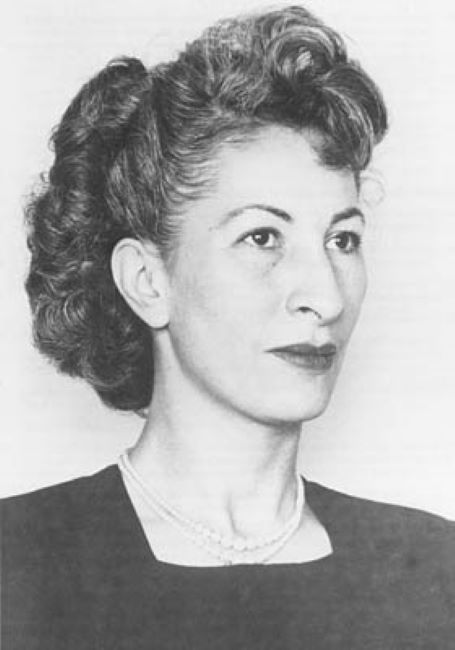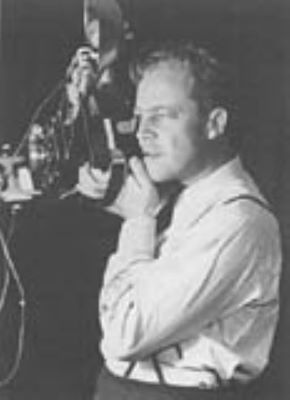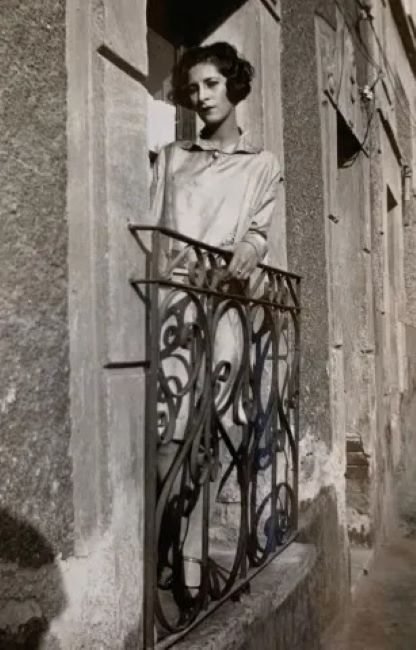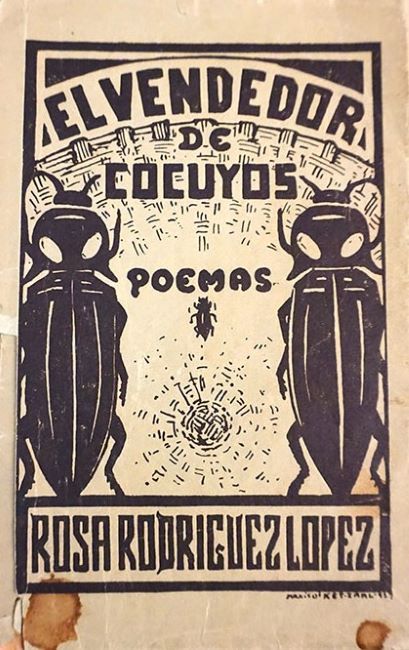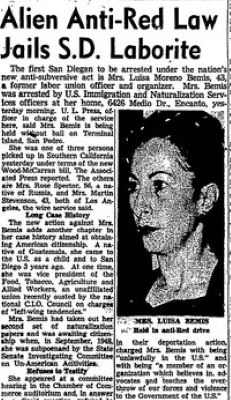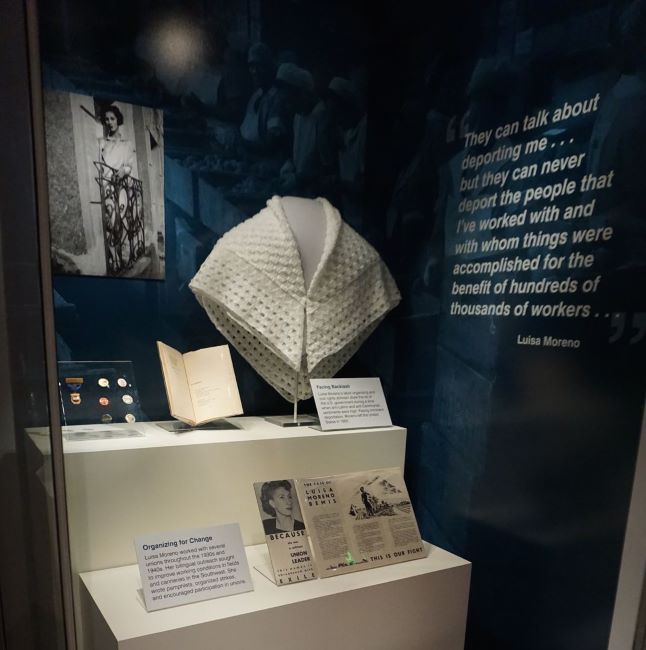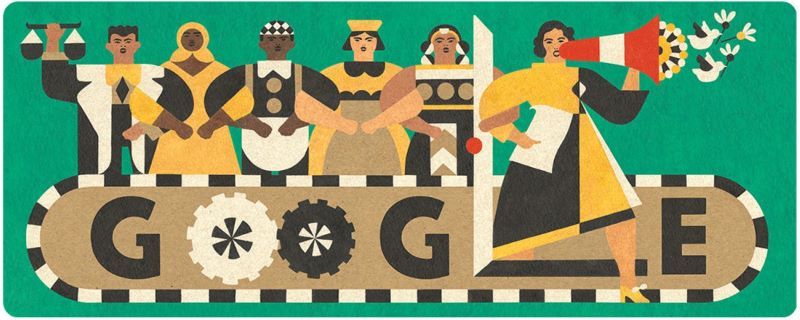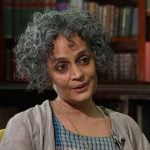Luisa Moreno Age, Death, Husband, Children, Family, Biography
Quick Info→
Death Date: 04/11/1992
Age: 85 Years
Hometown: Guatemala City
Some Lesser Known Facts About Luisa Moreno
- She was born into a wealthy family in Guatemala.
- Her family didn’t support her social activism.
- To avoid embarrassing her family’s name, she changed her name to Luisa Moreno in honour of a well-known Mexican labour organiser of that era, Luis Moreno.
- When she was 8 years old, she suffered from severe fever which the doctors weren’t able to treat.
- Her father prayed for Luisa’s life and promised to dedicate her life to the service of God.
- In 1916, Luisa’s father kept his promise and got her enrolled in Holy Names University, Oakland, California.
- There, she felt racism for the first time when she heard her classmate remark,
Spanish pigs so I belted her.”
- She also felt the behaviour of nuns was hypocritical, which made her turn away from religion.
- When she was 15, she wanted to enrol in college but found that women weren’t allowed to become university students at the time.
- The incident inspired her to form La Sociedad Gabriela Mistral with the support of her elite friends.
- In 1925, she founded La Sociedad Gabriela Mistral, named after the Nobel Prize-winning poet, Gabriela Mistral, with her sister, Graciela Rodríguez López.
- La Sociedad Gabriela Mistral was a feminist literary society that successfully fought for women’s right to get an education in Guatemalan universities and women’s right to vote.
- The members of La Sociedad were given a tribute in the history book, ‘La Patria del Criollo’ and referred to them as ‘una generación que hizo historia’ (a generation that made history).
- She has talked about the importance of education and feminism to empower women and said,
the woman continues to be attached to ignorance; her emancipation is necessary. Feminism will make her become Conscious … , and … by obtaining an adequate education, she will be prepared [for] … a much more ambitious future.”
- She went to Mexico City, Mexico, at the age of 19 to pursue journalism.
- While staying in Mexico, she also wrote poetry.
- In 1927, she wrote a book of poetry, El Vendedor de Cocuyos (Seller of Fireflies).
- She moved to New York City in 1928 with her husband, Angel De León.
- She worked as a seamstress in Spanish Harlem, New York, to support her family during the Great Depression (1929-1939), a period marked by the global recession and the crash of the American stock market.
- While working as a seamstress, she created a union of garment workers.
- She participated in the Pan-Latino protests that occurred after the police used violence against a group of Latin protestors and killed their leader, Gonzalo González, who was protesting the film, ‘Under a Texas Moon’ (1930) for being anti-Mexican.
- The protests motivated her to work to unify the Spanish-speaking communities.
- In 1930, she participated in a strike while working in Zelgreen’s Cafeteria in New York City.
- During the strike, she was brutally beaten by the police after she held a protest sign in front of the cafeteria.
- In 1935, she started working as a professional organiser for the American Federation of Labor (AFL).
- In the same year, she joined the Congress of Industrial Organizations (CIO), a militant committee within the AFL at the time and participated in some violent protests from late 1935 to early 1936.
- In 1937, she divorced her husband, Angel De León, because of his physically abusive behaviour and moved to Florida, United States with her daughter.
- After moving to Florida, she created a union of African-American and Latina cigar-rollers.
- Soon, she left CIO and became a representative of the United Cannery, Agricultural, Packing, and Allied Workers of America (UCAPAWA), a labour union.
- As a representative of UCAPAWA, she organised workers at pecan-shelling plants in San Antonio, Texas, and cannery workers in Los Angeles.
- She empowered women and encouraged them to take leadership roles in the union organisations.
- In 1939, she became a major organiser of the El Congreso de Pueblos de Habla Española (Spanish-speaking People’s Congress), along with fellow organisers, Josefina Fierro de Bright and Eduardo Quevedo.
- She travelled across the United States meeting Latin workers and Spanish Civil War refugees.
- In 1940, she became the editor of UCAPAWA’s Spanish newspaper.
- In the same year, she gave a speech before the American Committee for the Protection of the Foreign Born (ACPFB) and described the lives and contributions of migrant Mexican workers to the development of California, United States. Her speech was termed as the “Caravan of Sorrow” speech.
- She founded an employment office in San Diego with her friend, Robert Galvin, in 1940.
- She organised the Sleepy Lagoon Defense Committee for the defence of the youths who were wrongly accused during the famous Sleepy Lagoon murder trial in 1942.
- During her stay in Encanto, San Diego, she lived in a small house whose door had an inscription that read,
We are created to serve others. The sad thing is that we die only for ourselves.”
- In the late 1940s, she founded a San Diego chapter of the Mexican Civil Rights Committee and spoke about racism against Mexican Americans and other ethnic minorities.
- By 1947, she had retired from public life.
- She refused the offer of accepting American citizenship in exchange for testifying against the union leader, Harry Bridges.
- In 1950, a warrant for her immediate deportation was released due to her association with the Communist Party. She was also briefly arrested before getting released.
- She moved to Mexico City with her second husband, Gray Bemis, on 30 November 1950 and eventually settled in Guatemala.
- She was forced to move out of Guatemala in 1954 due to the CIA-sponsored coup against the president of Guatemala, Jacobo Arbenz Guzmán.
- Her contribution to labour rights and social activism led to better pay and working conditions, especially for Hispanic workers.
- In her will, she had written that she wanted to be cremated after her death, but her brother, Ernesto, buried her in the family’s marble mausoleum.
- Her belongings and artefacts have been put up for display at the American History Museum.
- She was featured in a Google Doodle, celebrating Hispanic Heritage Month on 15 September 2023.

